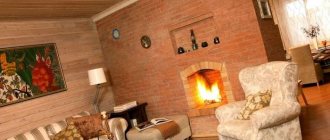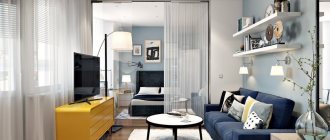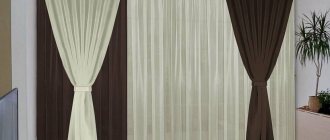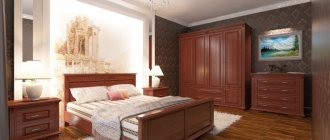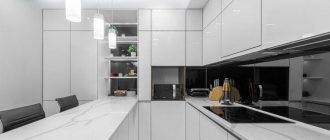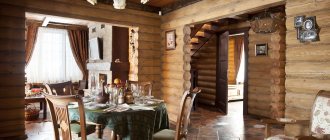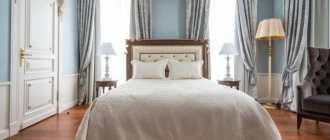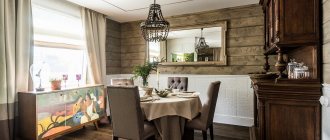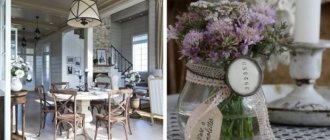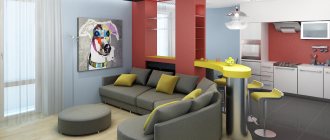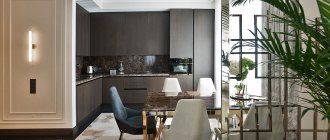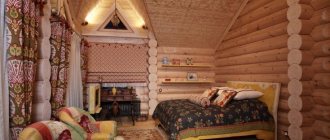The interior in the Art Deco style is bold and catchy, but complex.
A few not obvious mistakes - and instead of luxury, it will turn into a tacky mess. I’m not discouraging you, but I advise you to think about whether you are confident in your taste or the taste of your designer + your budget. There are other bright and unusual styles that are much easier to implement. Read our review of interior design styles, there are much safer options there.
If anything, I warned you. Here's a good example of the combinations you should be prepared for to make a decent art deco:
If you are not ready, take a closer look at neoclassicism (example in the photo below), maybe this is what you really need:
Art Deco style is eclectic, i.e. consists of a mixture of other design directions, and the elements chosen are not congenial, but rather contradictory. The style is status and catchy, even aggressive. It is distinguished by luxury and high cost; expensive finishing materials, exclusive designer furniture, and many accessories are used to implement it. The style has taken root in the interiors of media people: actors, singers, politicians.
History of style
Appearing after the First World War, which deprived humanity of illusions, art deco became a manifesto against the asceticism and gloominess of wartime. And also a hymn to the new century - with its memory of former luxury and aspiration for progress and comfort. The art deco style managed to embrace the immensity - both the past and the future! Obviously, this is why interest in it has not faded to this day, even though it has long been classified in the elegant “retro” category.
The name of the movement arose in the summer of 1925, when the exhibition “Internationale des Arts Decoratifs et Industriels Modernes” was a success in the capital of France, where the latest paintings, films, sculptures and household items were presented. The style that combined these things was reminiscent of Art Nouveau with its interweaving of utilitarianism and artistic value, as well as the pathetic pomp of Neoclassicism, however, it was completely original with elements inherent in the new era.
Art Deco in the interior: conceptual features
Today this interior style can be read like a book. The abundance of lamps will remind you of how electricity spread. The construction of the first skyscrapers was reflected in the silhouettes of the partitions and the design of the walls. Details made of metal and glass will tell about industrialization. Abstract inclusions and geometric shapes are about innovations in art. Ethnic patterns (African motif, Egyptian archaic, Greek meander) will tell not only that the 20th century is a time of travel, but also about the discovery of tombs and other archaeological sensations. Well, together these notes and chords form a sophisticated, enchanting jazz, unusually fashionable in that era.
Art Deco style in the interior of the bedroom
What is it made of and how is an interior similar to those in which Greta Garbo and the Great Gatsby lived created?
Textile design
Textiles only complement the interior and do not take on the main role. Therefore, it is made monophonic, less often with ornaments.
A lot of fabric can be used to create a cozy bedroom:
- flowing curtains with deep folds;
- bedspread with frill;
- canopy;
- soft pillows;
- high pile carpet.
Designers advise using textiles with floral patterns in extreme cases. It is better to choose striped or one-tone products.
Materials and texture in Art Deco style
- Tree
- Chromed, stainless steel
- Aluminum
- Glass
- Natural hides and leather
- Smooth stone/ceramic tiles
- Expensive fabrics (velor, satin, silk)
Art Deco is the standard of glamor; the materials that create it should shimmer and shine, giving rise to a feeling of chic and bohemianism. Therefore, gloss, polishing and varnish are in favor.
Walls
Since the space is filled with exclusive bright objects, the walls are only a background that highlights them favorably. The walls are made monochromatic, sometimes decorated with patterned panels.
The following techniques are used to decorate walls:
- textured plaster;
- matte paint;
- liquid wallpaper;
- natural stone or ceramic tiles (mainly for the kitchen or bathroom).
Shapes and lines
- Zigzags and stripes
- Sun rays
- steps
- Trapeze
- Frames and outlines
- Keys
The outlines of the style are curved, geometrically sharp and energetic. Zigzag patterns are most often used for laying parquet and ceramic tiles. Imitation of sun rays decorates not only mirrors and clocks, but also furniture and walls. The designers were inspired to use steps by the ziggurat, the cult tower of the Assyrians and Sumerians. Since then, steps, tiers and podiums have been a characteristic feature of Art Deco. Many objects and details in rooms arranged in the style of the 20s also have a trapezoidal outline: mirrors and chair backs, door handles and other fittings. Surfaces are often framed in contours and frames, which emphasizes the form. Very often there are keys - contrasting alternation of stripes.
Window decoration
Typically, windows are decorated with simple flowing curtains made of heavy fabric with drapery. Depending on the chosen interpretation of the interior - classical, historical or modern - you can choose multi-layer curtains with lambrequins, Japanese curtains in the form of smooth canvases or modern light curtains.
Art Deco in the interior: color and decoration
Favorite style palette is grey, brown, cream, shades of metal, wood and leather. Bright, saturated colors are acceptable in the form of fragments: it can be burgundy, green, red or gold. The use of three or more colors is a feature of the art deco style.
Art Deco in the living room interior
The bathroom, as well as the kitchen, are often decorated with black and white tiles, laying out zigzags or keys. The room is covered with wallpaper with geometric embossing. The bedroom walls are covered with wood panels or painted using the same geometric pattern. The floors are textured, glossy parquet.
The gradation is reflected on the ceiling, emphasizing the tiers with lighting. Borders at the junction of the ceiling and walls will help to emphasize the contour, which is very typical of the style.
Art Deco in the kitchen interior
Art Deco kitchen design 2019
Trapezoidal niches, stepped partitions, doors inlaid with geometric inserts and other fragments of decoration will take you back to the era of the 20s, like a time machine.
Color palette
Let's return to the color scheme of the room. Art Deco colors can be safely called noble. That is, not gray, but silver, not yellow, but golden, not dark red, but royal burgundy.
To create a bohemian atmosphere, you need to be very careful when choosing shades. There are classic combinations, for example:
- wenge – gold – beige;
- interior in black with the addition of beige and silver;
- use of pastel colors (bleached burgundy, beige, gilding);
- dark green room with gold trim and dark wood furniture;
- pronounced contrasts in which white color is actively used.
The era of the appearance of the style is also characterized by lavender, eggplant, dark blue, and muted yellow colors.
Art Deco furniture
[ads_block] Sofas and couches with backs in the shape of trapezoids, barrel chairs are preferably made of leather, of course. However, fabric drapery is also suitable if it does not go out of style: for example, “zebra skin”.
A special feature of the art deco furnishings are sideboards and cabinets. But not carved, with curls, but laconic and clear. Glass shelves, cabinets and tabletops, shiny metal parts, and mirror surfaces will also fit into a single mosaic.
Light and decor
The atmosphere of the 20s requires a lot of lamps: trapezoidal, stepped, in the form of balls and turrets. Mirrors will also multiply the light: in fact, a mirror-sun in a frame of rays is the calling card of the style.
Vases are appropriate - ordinary, floor, decorated with an antique or other pattern, an image of the sun, or geometric shapes.
Posters - with vintage advertising, skyscrapers, girls in retro style - will help to completely recreate the ambience of the early twentieth century.
Speaking of girls: figurines are an indispensable attribute of art deco. Figures of girls on a ball, with an oar, with a tennis racket are firmly associated with the 20s, when interest in the Olympic Games was renewed and the cult of the athletic body began to form.
The interior will be complemented by paintings or photos of “geographical” content: savannas, deserts, pyramids, views of the Taj Mahal and the Forbidden City.
Palm trees in tubs and other exotic plants will bring the once revered spirit of adventure into your home. And souvenirs brought from travel, smoking accessories, writing instruments, cut vessels, antique boxes will add exclusive touches.
Unlike art nouveau, its predecessor, art deco does not accept ornate floral patterns and banal floral prints: this should be remembered when choosing curtains and drapes.
Art Deco interiors are adored by famous, public people who are not alien to art. And also financiers and politicians, because status items fit perfectly into this style: items made of silver and crocodile skin, fur and ivory.
Art Deco - like no other design technique, emphasizes the creativity of nature and, at the same time, the status of the owner of the home.
Do you want to feel like a millionaire? — Furnish your home in the art deco genre!
Floors
A floor with a glossy shiny surface is considered characteristic. For finishing the floor choose:
- parquet with geometric patterns;
- glossy large tiles;
- polished marble.
For modern interiors, self-leveling flooring is chosen, usually plain or with a geometric pattern.
